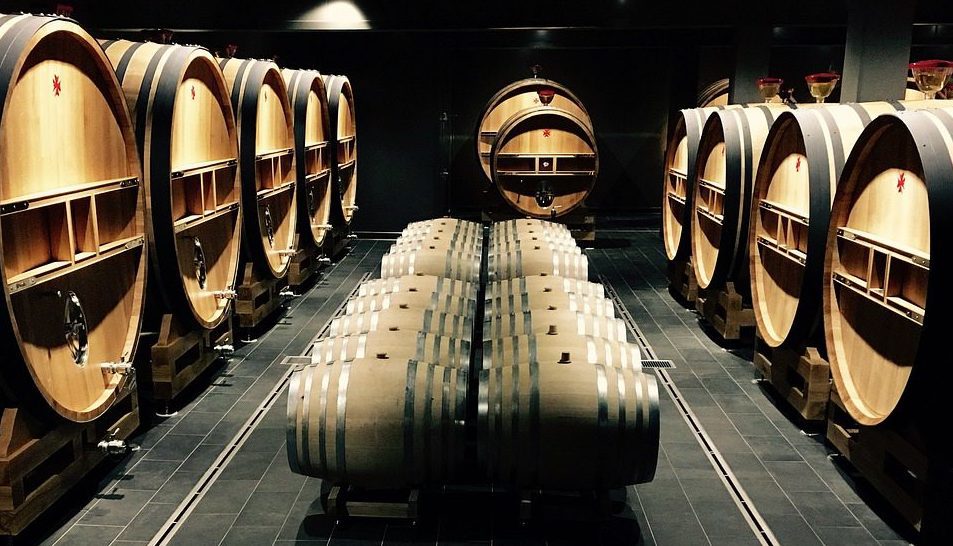
How do Oak Barrels Influence Wine Aging
Winemaking is a complex process involving various factors influencing the taste, aroma, and structure of the final product. Many elements contribute to those factors, one of them is the use of oak.
Oak barrels are commonly used in winemaking to impart unique flavors and enhance the aging process. In this article, you’ll discover more about this aging process.
The Birth of Oak-Aged Wines
This aging practice has been around for centuries. Originally Romans used oak-barrels as storage and transportation for wine. They then realized that oak barrels imparted new qualities to the wine. Thanks to the contact of wood, the wine became softer and smoother, and some of them were even tasting better. Soon enough, winemakers considered that the longer the wine stayed in the barrels, the better it tasted. This discovery marked the beginning of the art of oak aging.
What does Oak Add ?
Why do winemakers use oak for wine-aging ? The answer is easy : the flavor. Fundamentally, Oak “lactones” have coconut aromas, but you can also achieve different aroma compounds, such as :
- Vanillan which is a Vanilla flavor.
- Eugenol and Isoeugenol have spice and clove notes.
- Furfural and 5-Methylfurfuralt have caramel and sweet notes.
- Guaiacol and 4-Methulguaiacol have charred and smoky tones.
The Different Types of Oaks
When wine is aged using oak barrels, it goes through a process called “micro-oxygenation” ; this process allows a controlled amount of oxygen to interact with the wine, and undergoes a chemical reaction that shapes its flavor profile.
Different types of oaks can be used for this aging process :
- French oak : it has subtle and elegant flavors. This type of oak often gives flavors of spice, toast and a touch of vanilla.
- European oak : it includes oak from Hungary and Slovenia. This type of oak adds a distinct flavor to the wine. Countries such as Italy, Spain and Portugal often use that type of oak for their wine production, this type of oak is spicier and more woody.
- American oak : Known for their bold flavors with strong vanilla and coconut notes, this oak is often used in Californian wine production.
The two primarily preferred types of oak are American oak and European oak, they offer different subtleties. The choice depends on the flavor winemakers wish to accomplish.
For instance, the main difference between oaks resides in the density of it, European oaks are more dense, meaning they have close spaced rings, which results in less oak lactones and oxygen, meaning they can produce lighter wines such as Pinot Noir and Chardonnay.
American oak is perfect for bolder and more structured wines such as, Cabernet-Sauvignon, Petite Sirah, because of its oxygen ingress.
Bordeaux wineries use French Oak, usually found in central France; the Bordeaux barrel contains 225 liters, which is approximately 300 bottles.
We can also find what is known as “Foudres”, a large barrel that is used for aging alcoholic beverages. They range in sizes but usually start at 600 liters and then go up to many thousands of liters in capacity. They can also vary in shape compared with a typical wine barrel.
The Oak Aging Process
The length of time a wine spends in oak barrels can vary, depending on what the winemaker is trying to achieve. The aging process is a way to develop wine complexity, soften its tannins, and integrate flavors. Red wines, in particular, benefit from oak aging by enhancing their structure and imparting additional flavors.
It is important for winemakers to strike a balance so that the oak influence does not overpower the wine’s natural characteristics. The choice of oak type, barrel size, and aging duration is very important to achieve the desired balance.
Some wines, such as delicate white wines or fruity reds, may not benefit from extended oak aging. Winemakers may opt for minimal or no oak contact to preserve the wine’s freshness and fruitiness.
On the other hand, long oak aging can help soften the tannins and give complexity to the flavor profile of powerful red wines like Syrah or Cabernet Sauvignon.
The influence of oak barrels in winemaking plays a significant role by adding flavors, aromas and complexity to the wine. If it is coconut notes from American oak or spicy tones from French oak, the aging process can greatly influence the character and quality of the wine.

